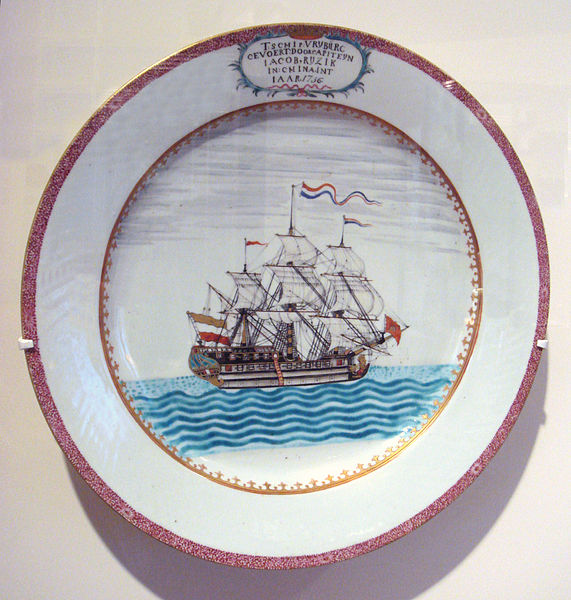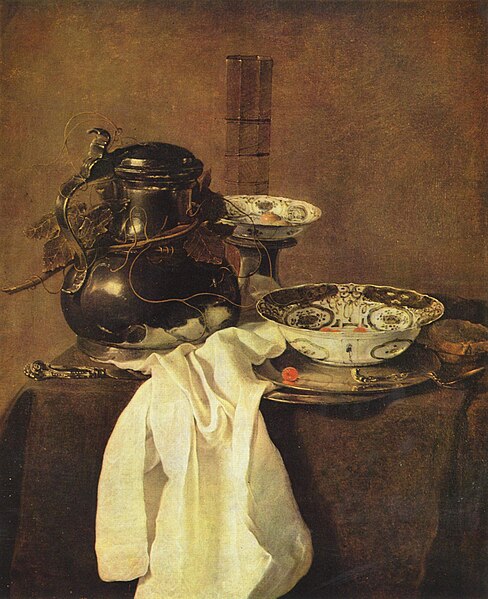The Sydney punchbowls, made in China during the Jiaqing Emperor's reign (1796–1820) over the mid-Qing dynasty, are the only two known examples of Chinese export porcelain hand painted with Sydney scenes and dating from the Macquarie era. The bowls were procured in Canton about three decades after the First Fleet's arrival at Port Jackson where the British settlement at Sydney Cove was established in 1788. They also represent the trading between Australia and China via India at the time. Even though decorated punchbowls were prestigious items used for drinking punch at social gatherings during the 18th and 19th centuries, it is not known who originally commissioned these bowls or what special occasion they were made for.
Library punchbowl showing beach where Circular Quay is now located
Museum punchbowl showing interior indigenous image common to both bowls
Chinese porcelain sample plate with four patterns for the European market via the Swedish East India Company.
View across Sydney Cove to the Commissariat Stores and Fort Phillip – indigenous figures shown on the foreshore.
Chinese export porcelain includes a wide range of Chinese porcelain that was made (almost) exclusively for export to Europe and later to North America between the 16th and the 20th century. Whether wares made for non-Western markets are covered by the term depends on context. Chinese ceramics made mainly for export go back to the Tang dynasty if not earlier, though initially they may not be regarded as porcelain.
An armorial dinner service for the American market, c. 1785–1790
Chinese blue and white export porcelain, with European scene and French inscription "The Empire of virtue is established to the end of the Universe", Kangxi period, 1690–1700.
Chinese porcelain plate for a Dutch sea-captain of the ship Vryburg, Canton, 1756.
Dutch 17th-century still-life painting by Jan Jansz. Treck, showing late Ming blue and white porcelain export bowls, 1649.








